SKL is reader supported. When you buy through links on our site, we may earn affiliate commission. Learn more here.
One of fashion’s big environmental problems comes in a really tiny form: microplastics.
Microplastics and microfibers are small yet pervasive pieces of plastic that have been found all around us in the environment and even inside the human body.
They are responsible for a lot of ocean pollution and a danger to wildlife. That’s why it’s important to understand what they are, where they come from, and how our clothes and lifestyle contribute to the problem.
This guide will explore everything you need to know about microplastics and how to avoid them.
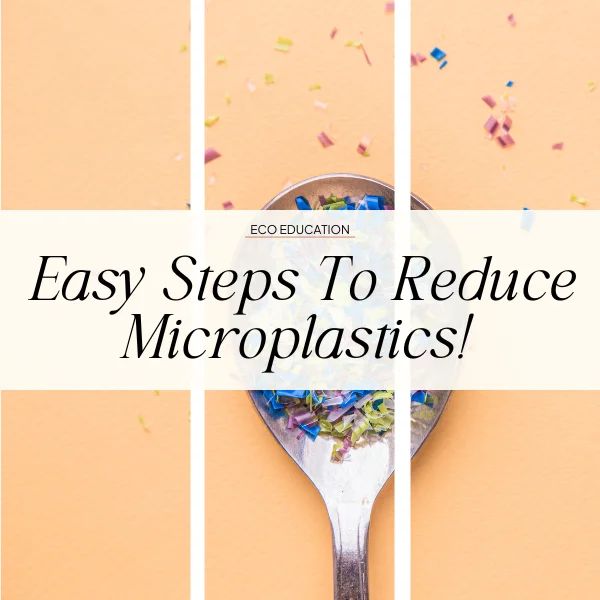
Many of us know all about the harms of fashion regarding exploitative supply chains and overconsumption. But did you know that these synthetic clothes can also shed harmful microplastics into our environment??
What are microplastics?
Microplastics are small plastic particles that are less than 5 millimeters in size (less than a quarter of an inch).
Think: the size of the eraser at the end of a pencil or smaller.
Microplastics can come from various sources, including synthetic textiles, exfoliants in beauty products, commercial product development, plastic water bottles, and more!
Plastics are everywhere, and many of them end up in waterways and, ultimately, the ocean.
While small, microplastics are a massive contributor to ocean pollution. Microplastic pollution can be hard to study and quantify due to the plastics’ varied nature and the vastness of the ocean, and therefore, it’s hard to put exact numbers on the impact of microplastics.
Most studies come away with different conclusions because they are testing different parts of the ocean (surface level versus sea floor) and different global regions and oceans.
Previous studies have estimated that the amount of microplastics floating in the global ocean could be somewhere between 5 and 50 trillion particles.
Yet, another study claimed that these numbers are likely a huge underestimation. They tested different types of nets used to collect microplastics for research and found that the typical nets used in studies didn’t capture many of the smallest microplastics.
When using a finer net, dramatically more microplastics were captured (2.5 times more), leading the researchers to estimate there could be as much as 12.5 to 125 trillion particles in the ocean.
It’s estimated that the amount of microplastic released into the environment has a global yearly average of one plastic grocery bags worth of plastic per person per week.
Where do microplastics come from?
Microplastics are often fibers and fragments of synthetic plastic materials like polyamide, polyethylene, polyethylene terephthalate, and all those other big words that start with poly- and mean plastic.
- Polyamide is another name for nylon used in many everyday items, from clothing to car parts like tires and seat belts to household items like carpets, toothbrushes, and combs.
- Polyethylene (PE) is the most commonly used plastic in the world, used to make plastic bags, food packaging, toys, cable insulation, and even bulletproof vests. Polyethylene terephthalate (PET) is a common polyester used in clothing, plastic bottles, and flexible food packaging.
When these plastics are discarded, especially if they end up in waterways, the sun and waves can degrade them to form microplastics. As one researcher put it, “Plastics break up, not down,” meaning plastics don’t decompose and disappear; they just fragment and spread out, continuing to pollute where they are.
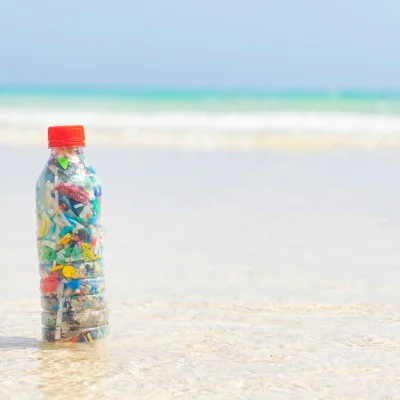
Some of the most common primary microplastics found in the ocean are microbeads from cosmetic products, microfibers from synthetic textiles, plastic pellets used in producing plastic products, and debris from the wear and tear of car tires.
Microplastics are hard to control, manage, and clean up because of how varied and pervasive they are.
Microfibers from clothing are fairly lightweight and can travel in the air, while tire plastics are heavier and get washed away from the road by rainfall.
Microplastics escape into the environment at every stage of a plastic product’s life cycle, from production to wear to waste management.
Microplastic Pollution in Fashion
Fashion has a plastic problem. Given that microfibers that shed from textiles are one of the most prevalent forms of microplastic, it’s important to explore why this happens and how we can avoid contributing to the problem.
Fashion relies heavily on plastic in the production of our clothes.
Synthetic materials make up about 60% of our clothing, and that number is expected to grow.
These plastic-based textiles harm the environment and people across every stage of its lifecycle from extraction, use, and end-of-life.
Synthetic materials in fashion depend on fossil fuel production, release microplastics all around us, and create difficulty in recycling and decomposition.
There are several ways that these microfibers are released into the environment, mainly through shedding during wear and laundry.
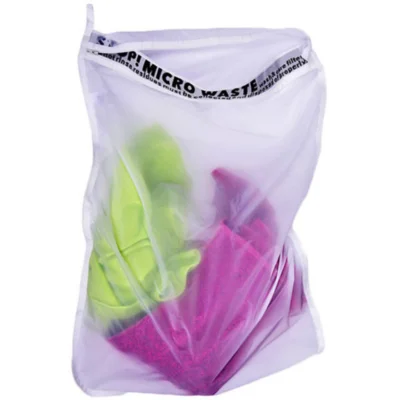
35% of microplastic pollution comes from synthetic textiles. When synthetic clothes are washed, tiny fibers are released into the wastewater, which makes their way to rivers, oceans, and other bodies of water.
These fibers are so small that 40% of microfibers escape the wastewater treatment plants’ filtration systems, so they pollute the environment.
In just one average wash, clothing can release over 700,000 microfibers.
The Ellen MacArthur Foundation’s textile report claims the “washing of textiles causes around half a million tonnes of plastic microfibers to be released into the ocean annually. This is equivalent to the total weight of almost 3 billion polyester tops.”
To address plastic pollution, we must address the fashion industry’s role.
What fabrics have microplastics?
Microfibers can originate from all textiles, but microplastics come from synthetic materials, such as polyester, nylon, and acrylic.
Polyester is the most popular synthetic fabric, producing around 80% of synthetic fibers. Unfortunately, it also sheds up to 6 times more microfibers than its cousin, nylon.
These synthetic fibers are often used in clothing because they are cheap, durable, and easy to maintain.
Just how much microfibers a garment releases depends on the construction of the garment.
How a garment is woven or knit, what type of yarn is used, and what it’s treated with all impact whether a garment is more or less likely to shed microfibers.
Knowing what materials and methods lead to shedding is an important responsibility producers must undertake to reduce shedding.
To learn more about synthetic fabrics’ usage and harm, see our polyester and nylon fabric guides.
What’s the harm of microplastics?
Microplastics can have negative impacts on the environment, animals, and people.
Most of the focus on microplastic impact is on marine ecosystems, including harming sea creatures through ingestion or entanglement and disrupting food chains.
Studies have found that a wide range of marine organisms have ingested microplastics. These microplastics can end up in the food chain, including in seafood consumed by humans.
One study found microplastics’ toxic effects on fish include reducing food intake, delaying growth, causing oxidative damage, and abnormal behavior.
Studies on the microplastics found in soil reveal threats to biodiversity and ecosystem functioning. Microplastics are invasive and harmful wherever they end up, which is seemingly everywhere.
Are microplastics harmful to humans?
Given that microfibers are being found everywhere, from our food to the air we breathe to our waterways, it’s natural to wonder what impact microplastics have on people.
A lot more studies need to be done on this topic (remember, synthetic materials haven’t been around that long – and yet we already have a massive pollution crisis on our hands!).
We do know that humans are ingesting microplastics (mostly from drinking water)— approximately a credit card’s worth every week!
One report found that 25% of fin fish and 33% of shellfish contained anthropogenic debris (most of which was from textiles) at a seafood market in California.
Beyond being found in our food and water, microplastics have been found in our blood and even human placentas.
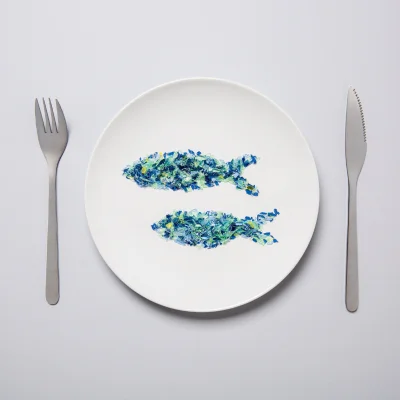
While the studies about where microplastics are being found are multiplying, there is little research being done on the impact on human health.
One scientific analysis warns that we can’t assume no news is good news, as some media outlets have reported and dismissed concerns that microplastics may harm people.
The analysis states, “It is clearly perilous to believe that the absence of evidence of risk translates into evidence for the absence of risk.”
The report details the urgency in which more research needs to be done to address our knowledge gap on this topic and indicates that the grounds to be concerned about the toxicity and safety of microplastics are consistent with what we know about “particle and fiber toxicology, air pollution particulate studies, and nanotoxicology.”
In plain English, these scientists are saying that science and governments have neglected to carry out this necessary research so far; there’s good reason to believe microplastics are harmful and that research must be pursued immediately.
How to Avoid Microplastics In The Home
Reducing Microplastics From Your Closet:
- To reduce the amount of microplastics and microfibers in clothing, consumers can say no to fast fashion and choose clothing made from natural fibers such as cotton, linen, and wool.
- Washing clothes efficiently and less frequently.
- Choosing eco-friendly and delicate washing detergents.
- Washing in cold water vs. hot.
- Choosing delicate settings in your washing machine.
- Air dry clothes vs. using a dryer machine.
- Using a washing bag (see below for recommendations!)
- Using a filter designed to capture microfibers can also help reduce the release of microplastics and microfibers into the environment (see below for recommendations!)
- Front-loading washing machines can reduce shedding.
- Lastly, urging governments and fashion brands to regulate the production of synthetic textiles is an important piece of lessening the microplastics that get produced and released in the first place.
Products to help you avoid microplastics from fashion:
The Guppyfriend washing bag is a really practical, accessible solution to reducing microfiber shedding in your own laundry process. It’s a protective laundry bag that you put your clothes into before washing (similar to lingerie wash bags). The bags reduce the number of fibers that break and therefore shed and capture the sheddings that do occur. Their tests revealed that the bag reduces the amount of synthetic breakage by 86% and captures 90-100% of what does shed.
The Cora Ball is a laundry ball that acts as a filter, inspired by the way coral filters the ocean. It collects microfibers to be disposed of properly. It also helps prevent microfibers from breaking off clothes, reducing the total amount of microfibers produced while protecting clothes. Independent research round that Cora Balls prevent an average of 31% of microfiber pollution.
The PlanetCare filter attaches to your washing machine and captures microplastics before they enter your drain. Their tests show that it stops 90% of microfibers and saves the equivalent of 52 plastic bags from the ocean annually. PlanetCare also takes back the used filter cartridges to recycle the captured microplastics and clean and reuse the cartridges.
The Filtrol is another microfiber filter that attaches directly to your existing washing machine drain hose and removes non-biodegradable synthetic fibers and other debris before they are released into wastewater sources and the environment. It stops 89% of microfiber pollution.
Ultimately, fashion needs to move away from plastics as a whole. The ubiquitous nature of microplastics found in textiles is just one important reason why. Now that you know more about fashion’s tiny yet pervasive villain, you can make more informed clothing decisions to avoid the harm of microplastics.
Reducing Microplastics In Everyday Lifestyle Choices:
- Eat more fresh, whole foods and less packaged foods.
- Aim for plastic-free cosmetics and skincare. Refillable glass is wonderful!
- Avoid exfoliating beaded skincare at all costs.
- Avoid plastic water bottles as much as possible and opt for filtered tap water in your reusable water bottle!
- Avoid single-use packaging.
- Bring your own reusable bags and mesh bags when shopping.
- Bring your own takeout containers and cutlery to restaurants – for microplastics and your health!
- Store food in metal or glass containers vs plastic containers.
- Do not microwave food in plastic.
- Shop the bulk bins and bring your own containers to avoid plastic packaging.
- Be sure to keep the house tidy and vacuum/dust frequently.
- Support those who want to fight back against microplastics! Encourage your local government, friends, and family to make better environmental choices.
This was your full guide to avoiding microplastics.
So, there you have it. Over 20 simple yet effective ways to reduce microplastic pollution in your closet and everyday lifestyle choices. While these steps may seem super simple, they will make a truly large impact if we can more and more people on board! Cheers to making better environmental choices and helping our Oceans and bodies stay healthy and microplastic-free.
If you learned from this blog post on microplastics, check out these other educational posts below!
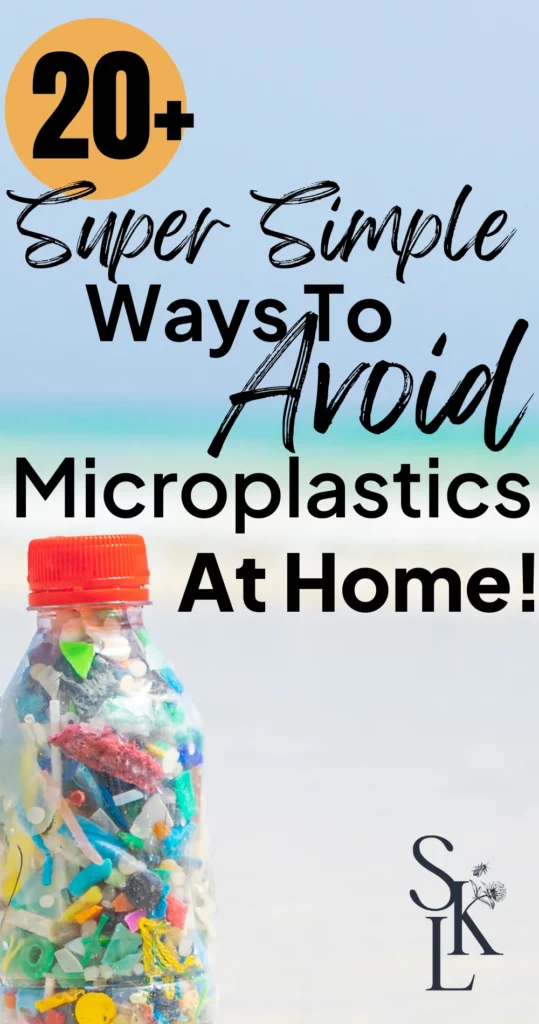
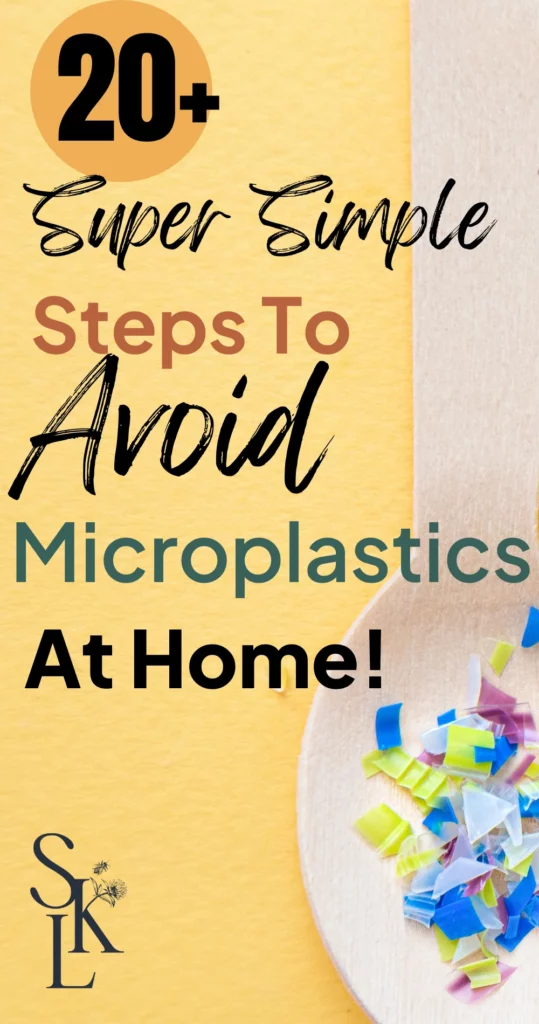
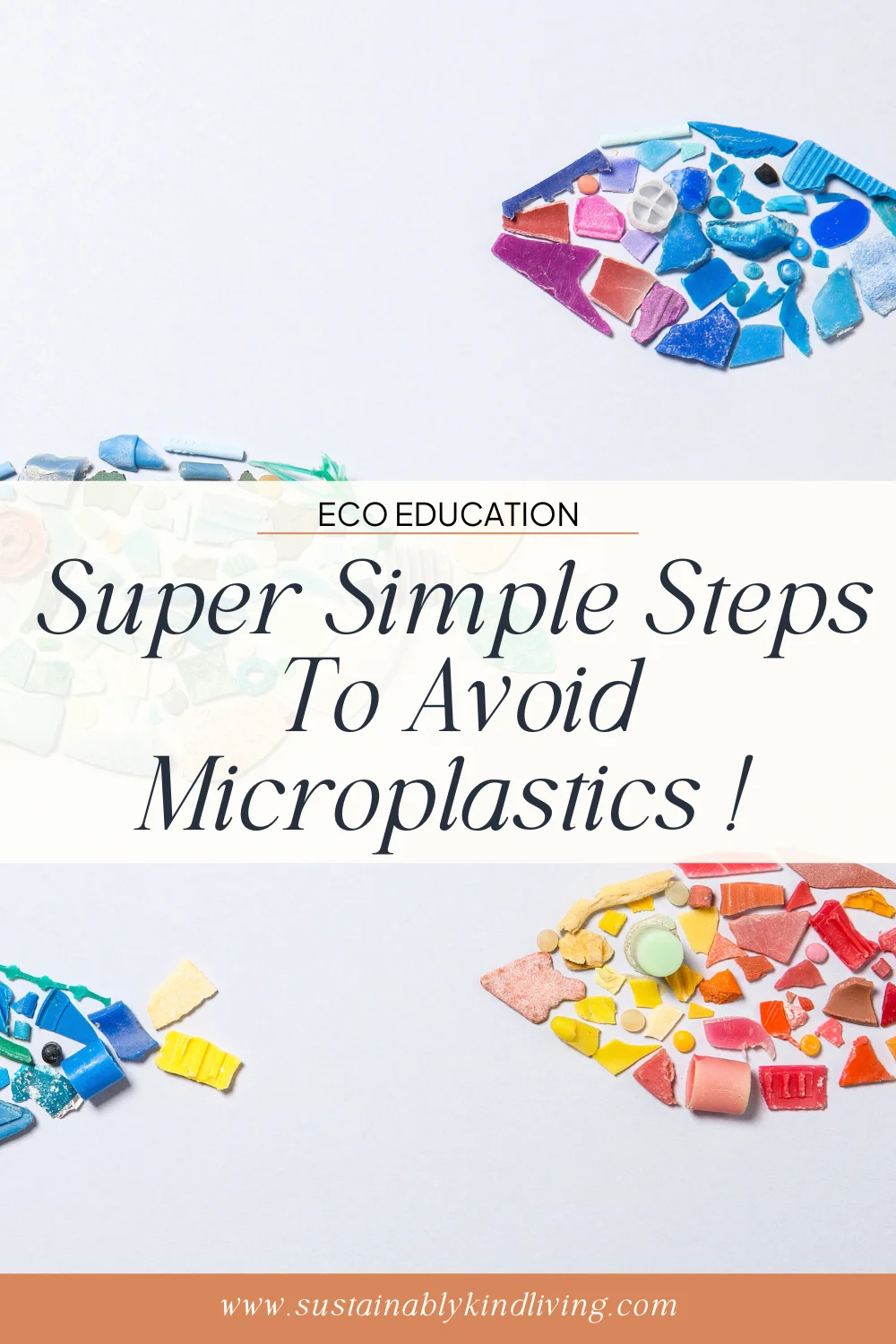
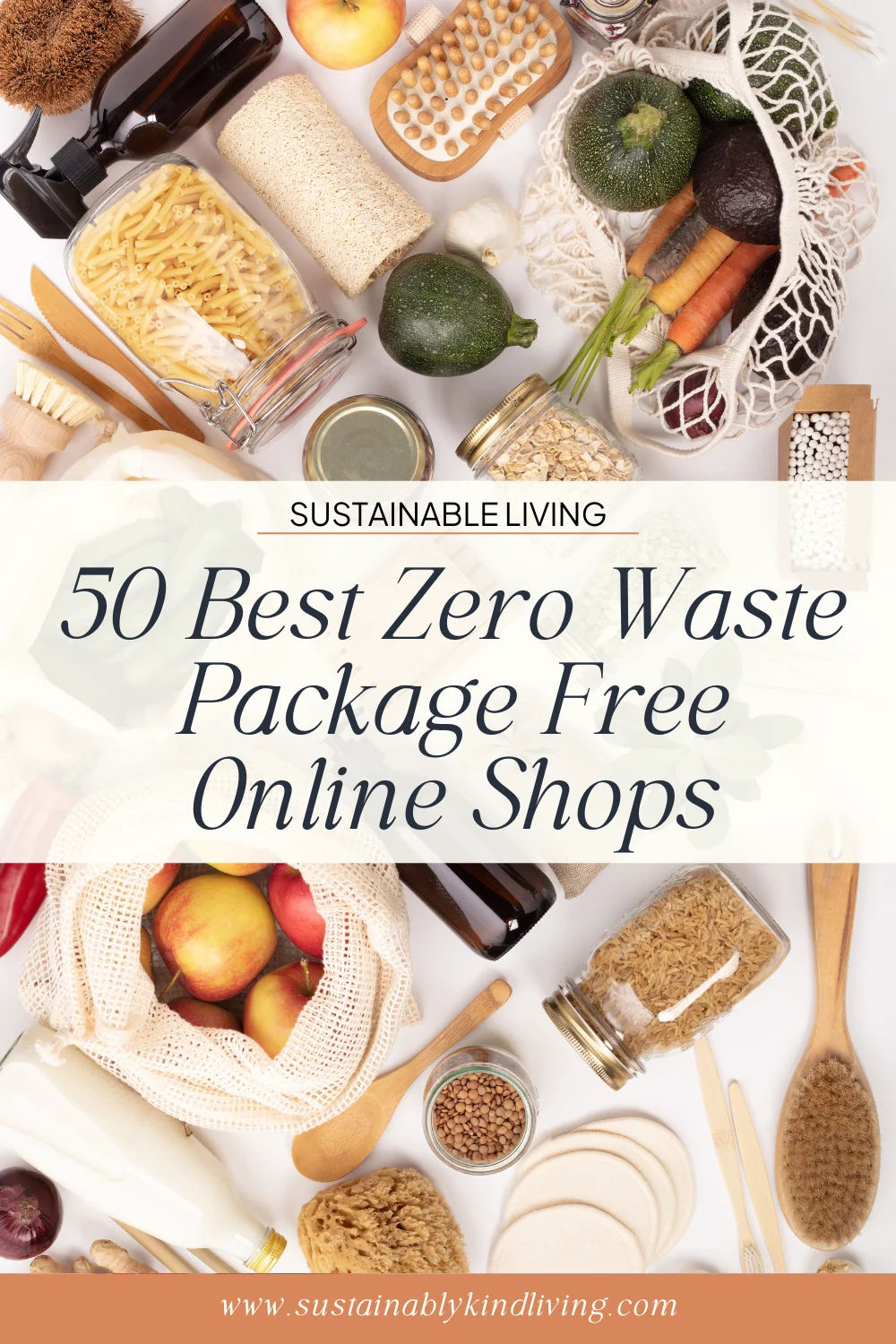

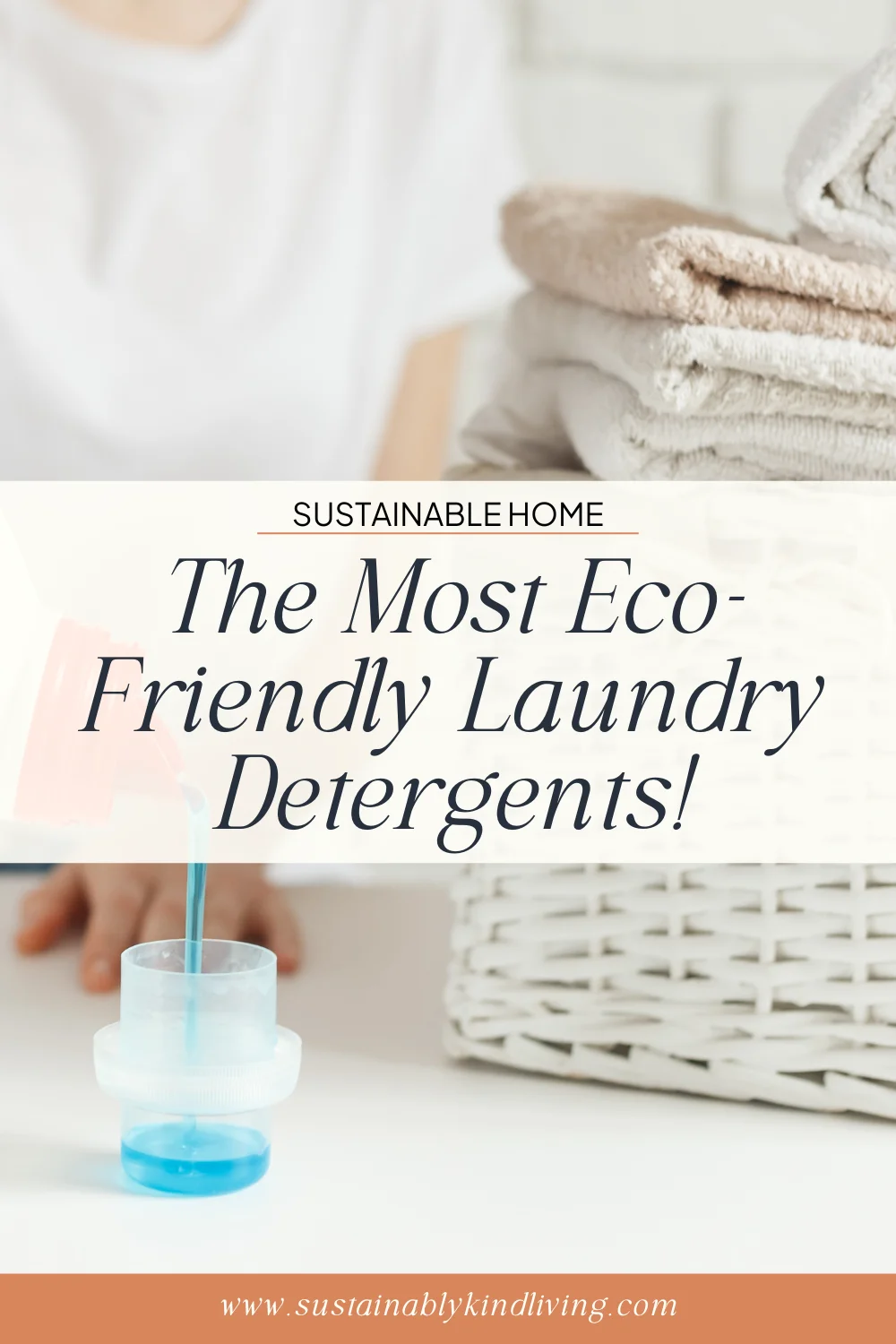
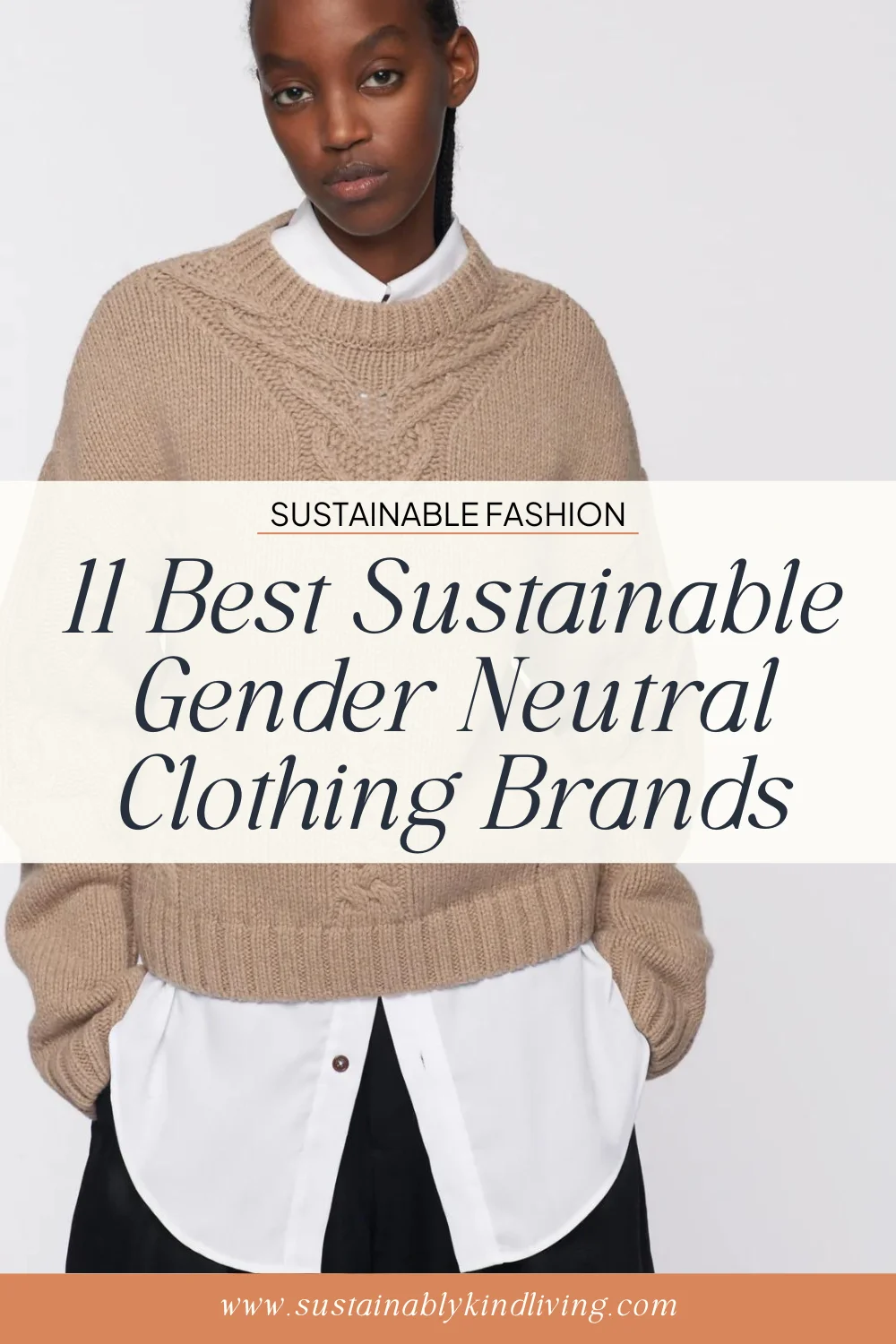



+ show Comments
- Hide Comments
add a comment